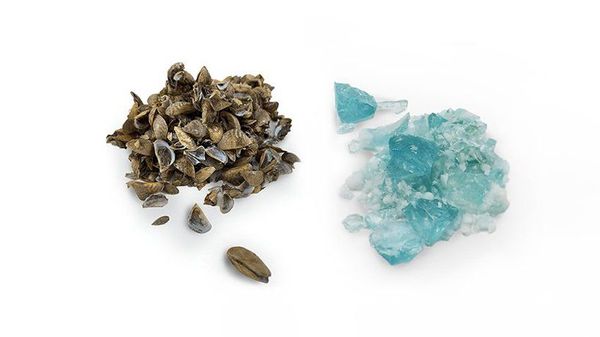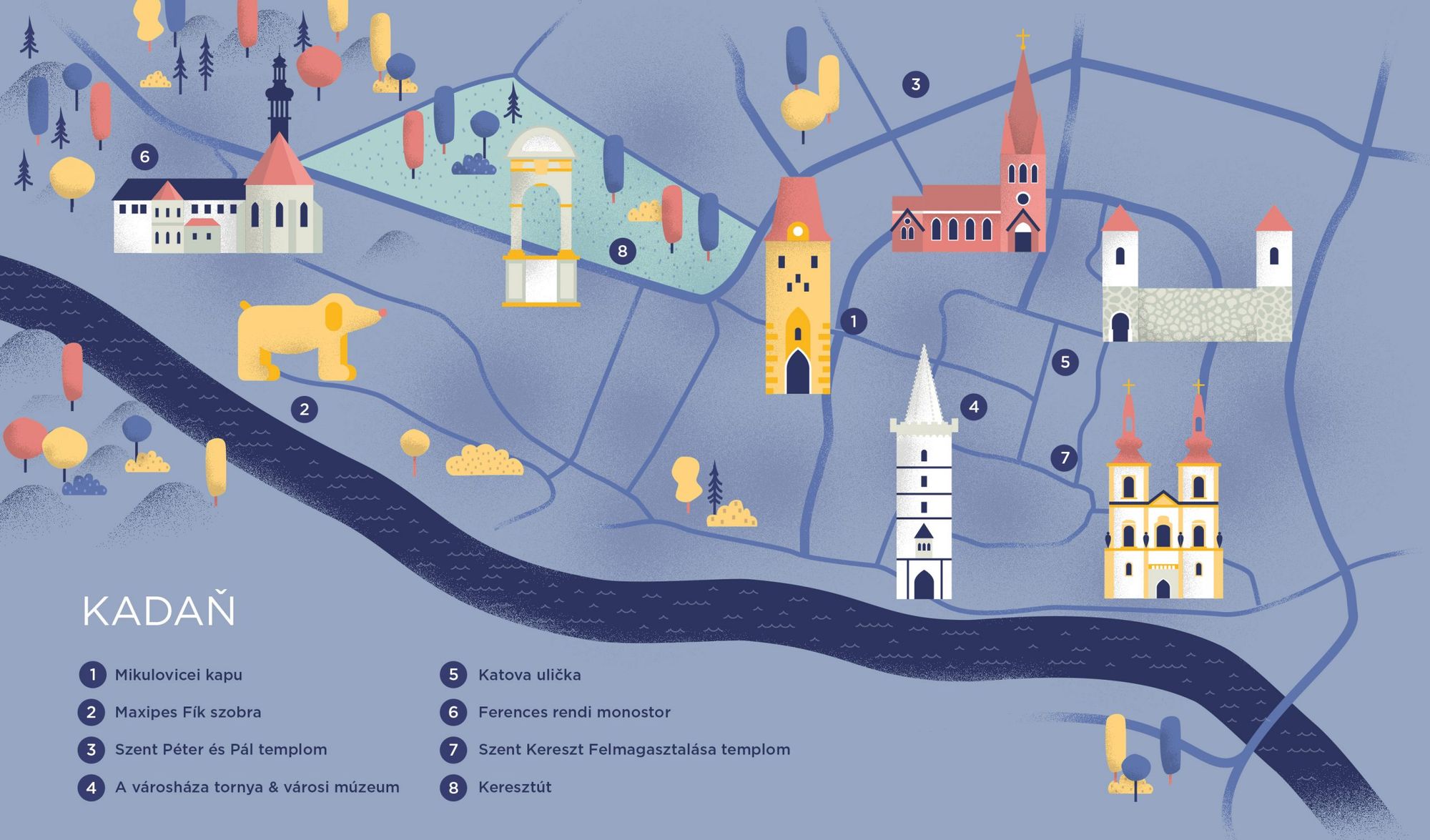This time we ventured a little further, to Kadaň in the Czech Republic near the German border, where in addition to the sights of the historic old town, you’ll also get to meet a bushy cartoon character.
We noticed the city of Kadaňlocated near the German border when it received a new visual identity: design studio Colmo designed a modern visual identity built on traditional elements for the Czech town of 18,000. So we became curious to see what else Kadaň offers. In addition to the centuries-old architectural heritage, it has a Franciscan monastery surrounded by a gorgeous garden and a statue (or rather statues) to commemorate a Czechoslovakian cartoon character, but we’ll also find the narrowest alley in the Czech Republic here, named „ulička” meaning little street – the name of which might sound cute, but wait until you read its story.

Mikulovice Gate
Visitors can find the Mikulovice Gate built in Gothic style, also known as Saint Tower, in the historic city center of Kadaň. The tower erected in the 13th century was built as a part of the town fortress, and earned the addition “Saint” in 1532 because this is from where one could get to the Church of the Fourteen Saint Helpers. Its significance comes from the fact that it marked the border between the old and new part of Kadaň, and it was also located on one of the important commercial routes to Saxony. Several Czech rulers, including Wenceslaus II, Charles IV, Ferdinand I, and Joseph II has passed through the gate located at the bottom of the tower. The tower reached its current form in 1877-78, when it also received a clockwork.
The statue of Maxipes Fík
It’s not a common thing to raise a statue for a cartoon character, and especially not to celebrate its birthday. Yet this is exactly what happens in Kadaň: the lead character of Maxipes Fík, the Czechoslovakian animated TV series first aired in 1975 is quite popular around here. The bushy dog called to life by writer Rudolf Čechura and animation director Jiří Šalamoun (as “pes” in Czech means dog) gets into all kind of adventures: it goes to school, drives a car and even explores the Arctic. The cartoon was narrated by Kadaň-born Czech actor Josef Dvořák. Two statues were created in the town for the hairy character: one by František Vlček, and another, more modern version by Michal Fiala. The city dwellers celebrate the birthday of Maxipes Fík on May 29 every year, when they organize all-day programs for the children in the town.
Church of Saints Peter and Paul
Kadaň’s youngest temples include the red-colored Church of Saints Peter and Paul, located to the north of the historic city center. It is a relatively new building, indeed: the church was built in 1903, in neo-Gothic style. Originally the church dedicated to the Blessed Savior was used by the German evangelical community. After the leaving of the German troops in 1945, the building was transferred to the Czechoslovakian Hussite church.
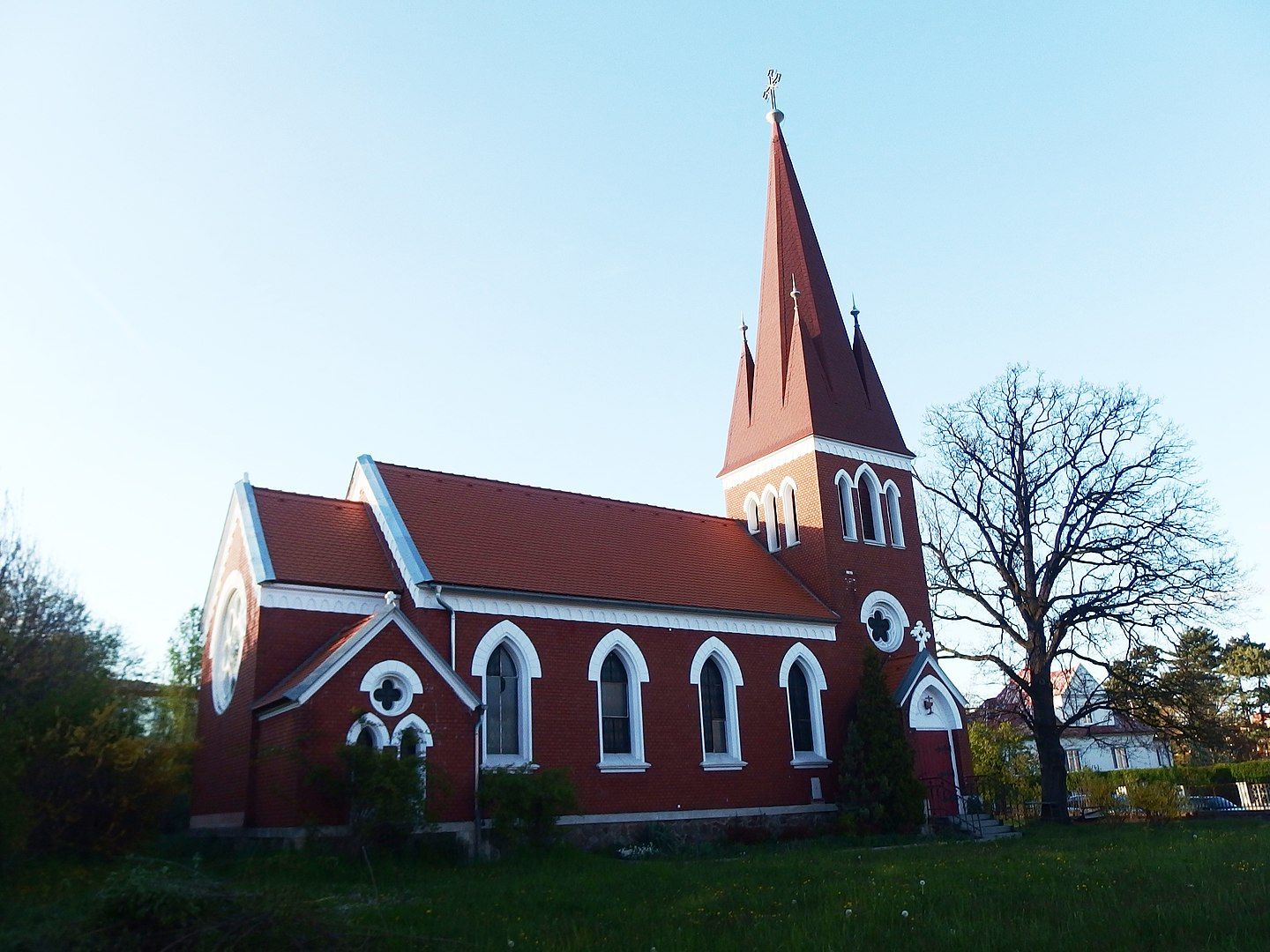
The tower of city hall & town museum
On Kadaň main square, the snow white, Gothic tower of the city hall rises to the sky. With its impressive height of 53.75 meters, it also earned the title of the highest building in the Czech town. The tower built in the 16th century has five stories, and each of these stories offer some attraction to visitors: for example, the first story gives home to a chapel, and one can also discover the shape of a dog near the battlement. The interior of the building mainly shows Gothic marks, but some Renaissance frescos can also be observed in the attic. Currently the city hall gives home to the local government of Kadaň and the mayor’s office.
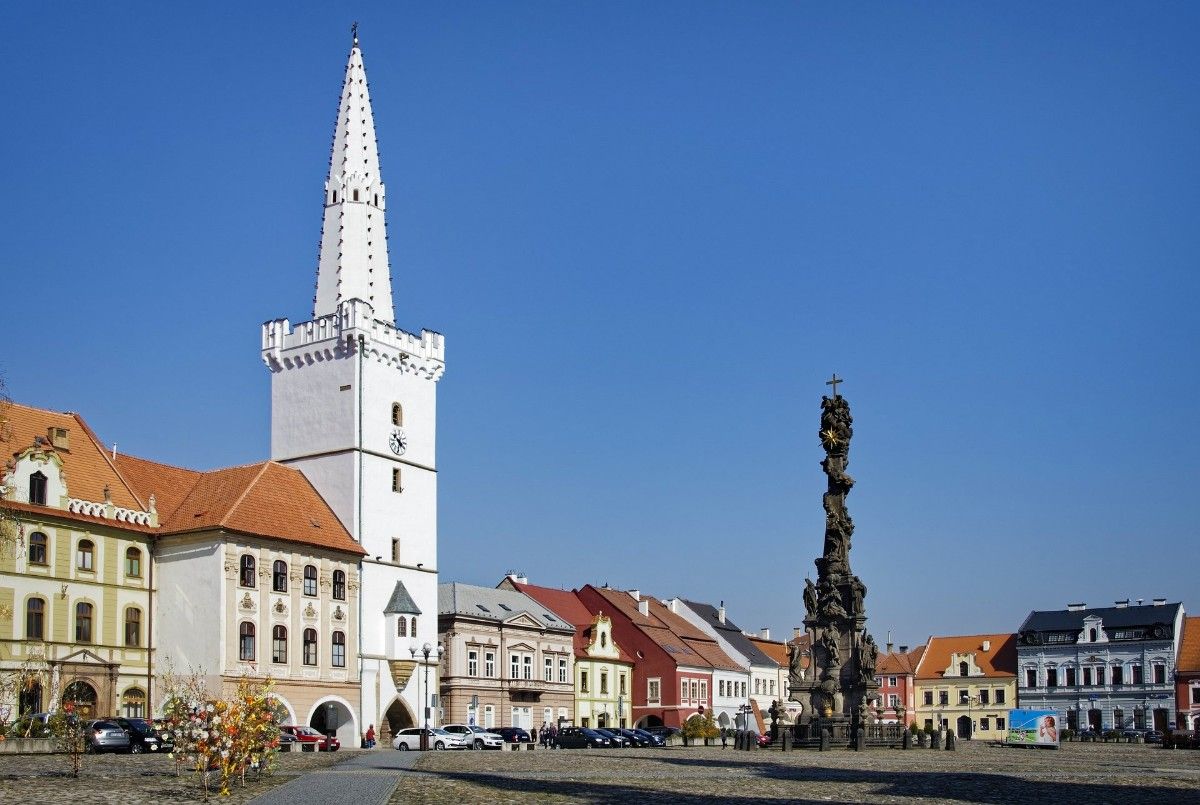
Katova ulička
You should look for the Katova ulička sign near Mírové náměstí 77. The red street name table is hidden between two buildings, and this sight is definitely not recommended for those battling with claustrophobia: Katova ulička (little street) is the narrowest street in the Czech Republic with its 66.1 cm width. The 50-meter long alley was named after the city’s hangman, who lived in the house at the end of the same, and who walked this street many times to get home. According to the local legends, there was a nun who fell in love with the hangman called Ignác Kayl, and the woman was walled up inside the alley with a Gothic entrance, and her ghost has been haunting in Katova street, that is the street of the hangman, ever since after dark.
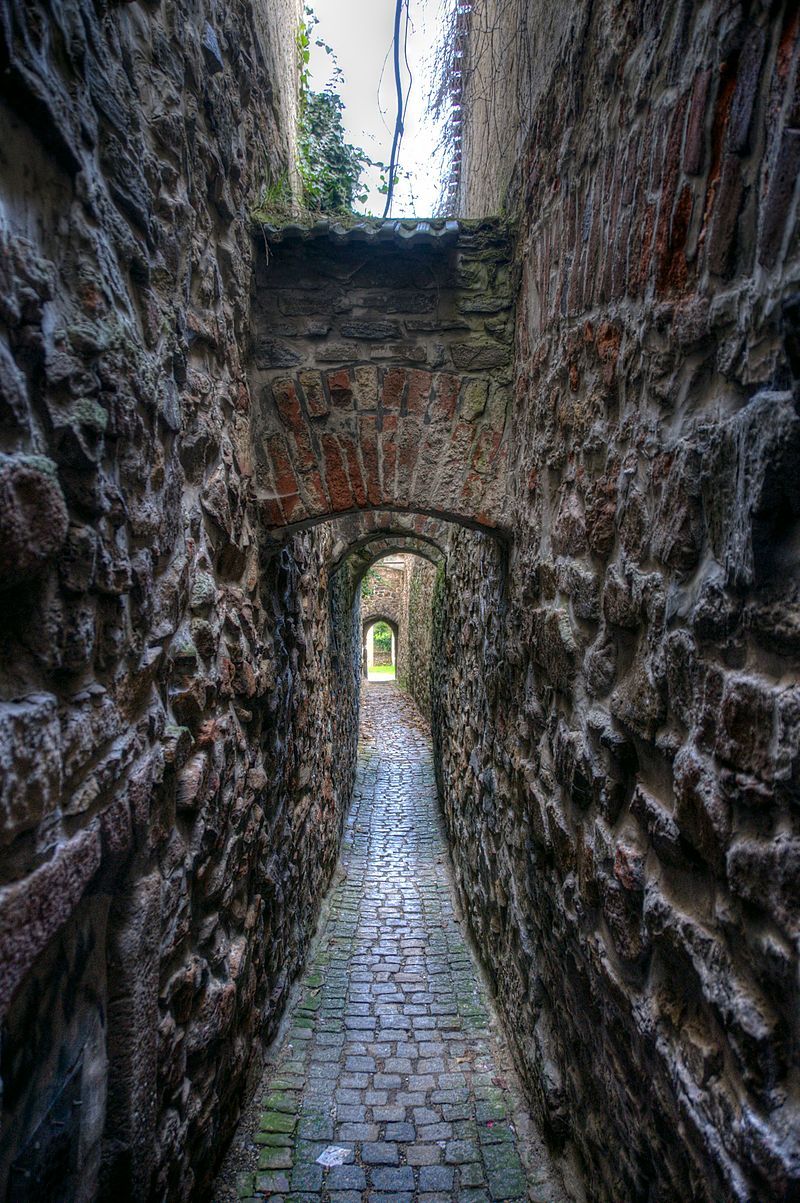
Franciscan monastery
We can find the Franciscan monastery built at the late 15th century and the marvelous garden surrounding it a little bit farther away from the center of the town. The building commissioned by Kadaň’s governor was built on the place of the former pilgrimage chapel, and served as the dwelling of Franciscan Order until the 1950s, when the monks living there were forcibly sent to labor camps. The monastery was returned to the Franciscan order after 1989, the building was renovated and the collection of the town museum was moved to it. Visitors can participate in guided tours here, allowing them not only to get to know the building complex now part of the UNESCO World Heritage, but can also gain an insight into the everyday life of monks.

Elevation of the Holy Cross Church
Elevation of the Holy Cross Church, first documented in 1291, is once again situated at the main square of Kadaň, at Peace square. The church was the victim of two fires during the thirty-year war, and the originally three-nave Gothic basilica was transformed into a Baroque church during renovation – we can only a notice a few Gothic marks at the entrance of the church, including the characteristic arch of the gate. The church with a troubled fate didn’t manage to avoid the fire of 1811 either, and the domes currently visible were only added to the towers thereafter, in 1862.
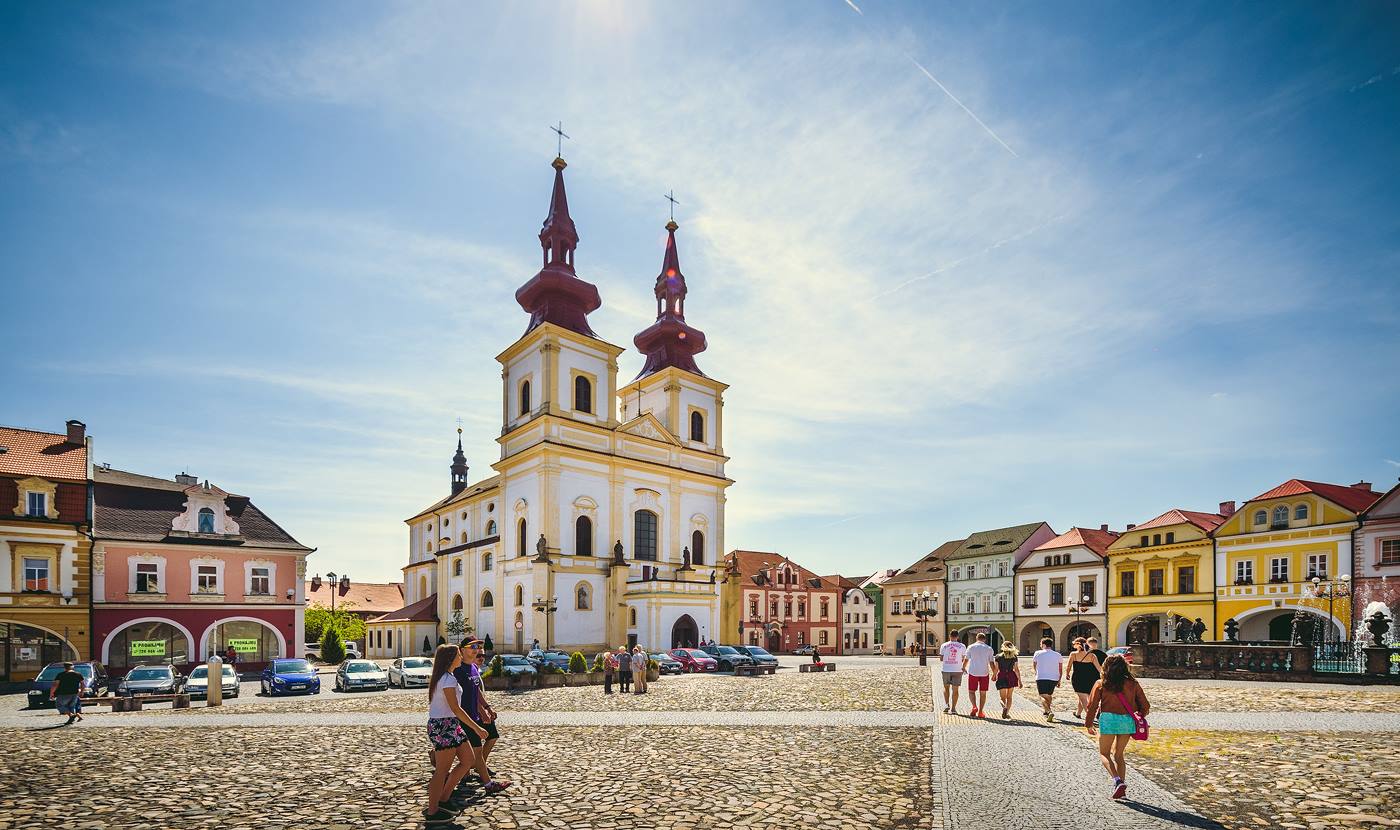
Stations of the Cross
The Stations of the Cross, built at the end of the 17th century and consisting of seven stations stretches between the tower of the city hall located in the old town to the Franciscan monastery at the edge of the city. The length of the Calvary in Kadaň equals that of the original route in Jerusalem, where Jesus carried his cross from Pilate’s court to the Golgotha. Visitors can explore the arched stations made of limestone in the park of the town.
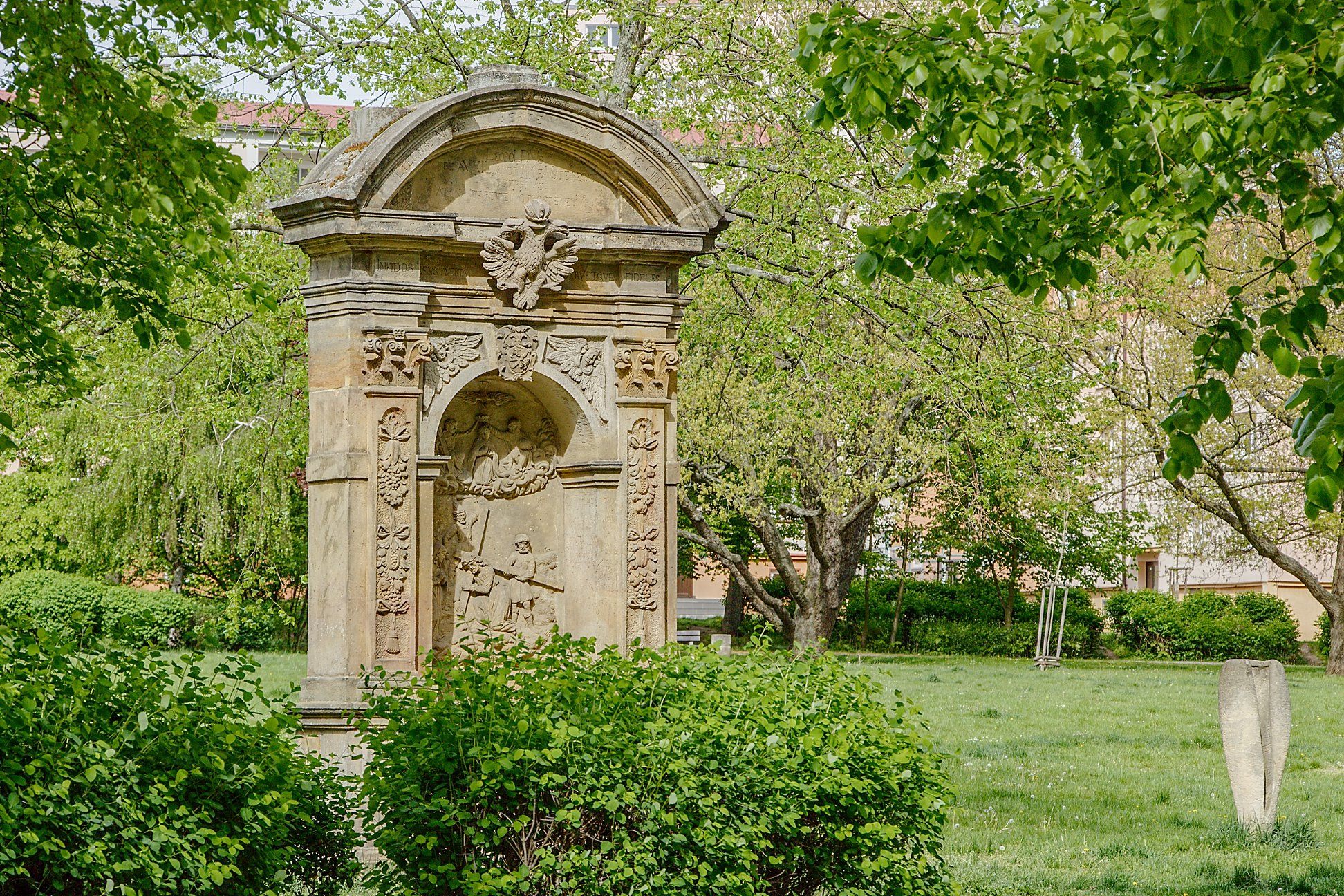
In our series titled EAST COMPASS, we explore the exciting cities of the Central-Eastern European region on the axis of the past and the present, in a special visual presentation.
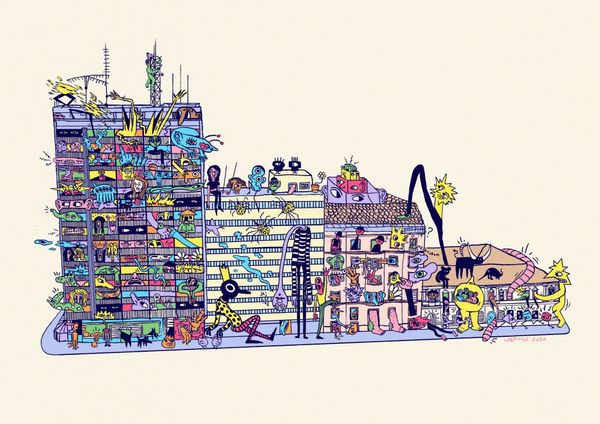
Budapest by Labrosse | II. János Pál pápa square

Pantone created an application to help us identify colors
